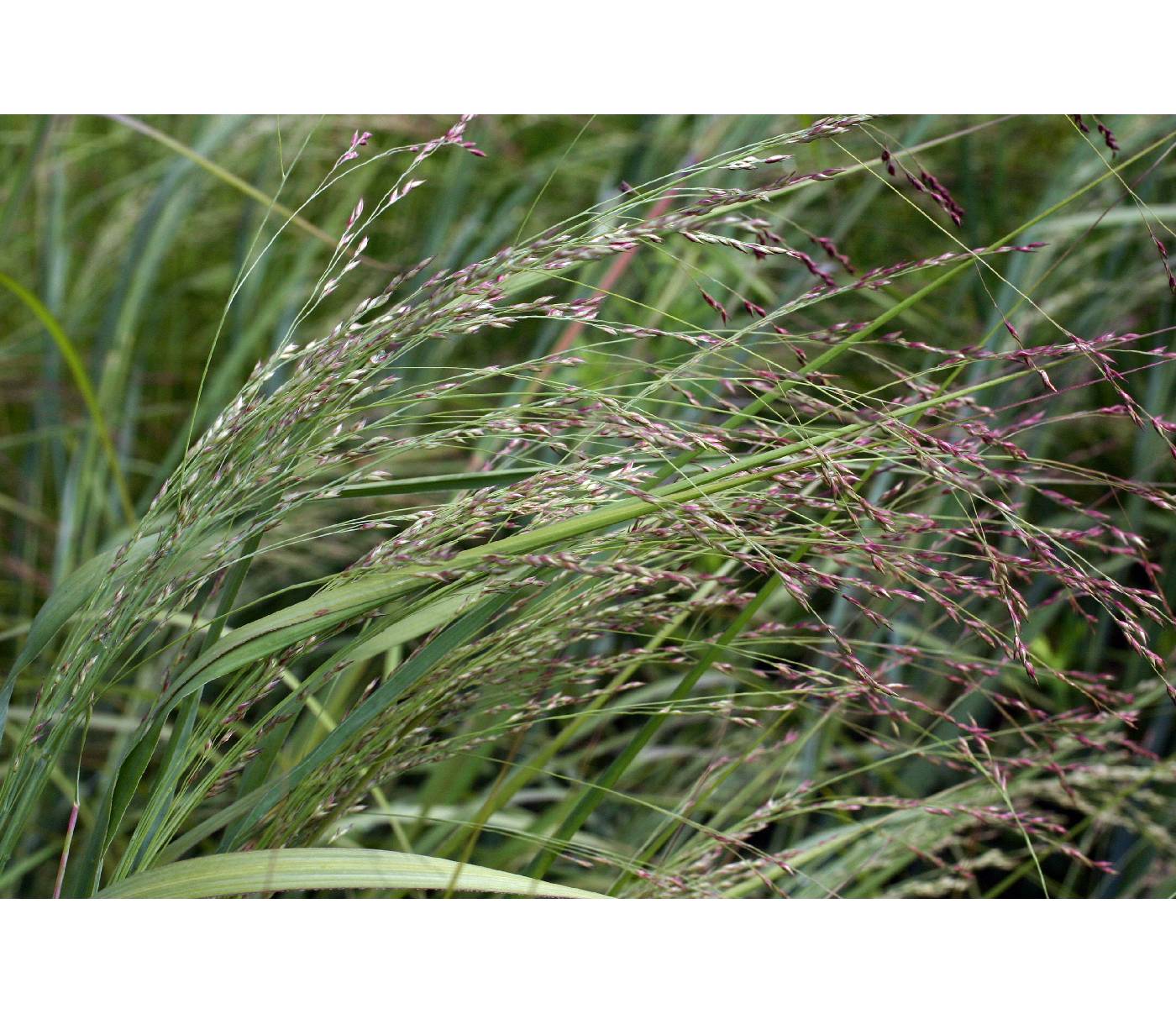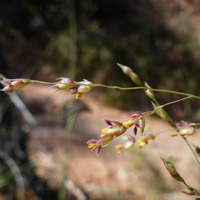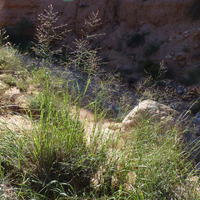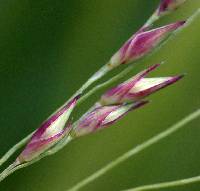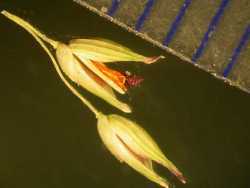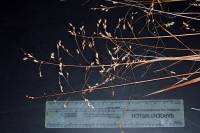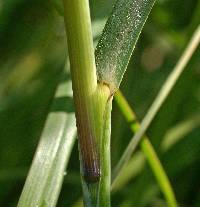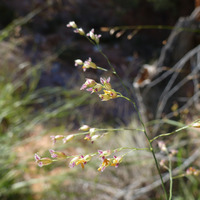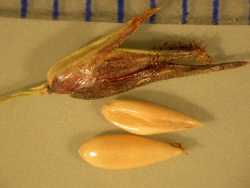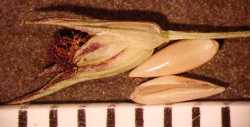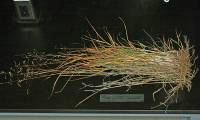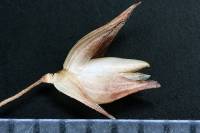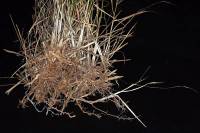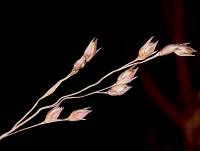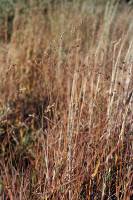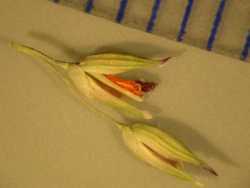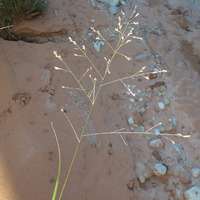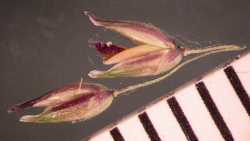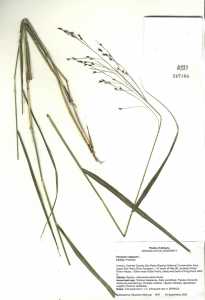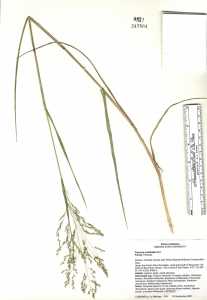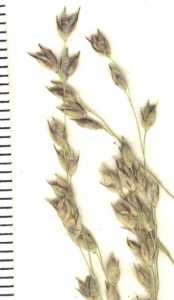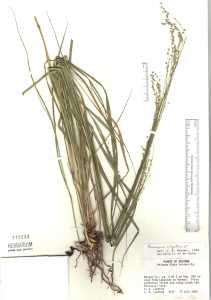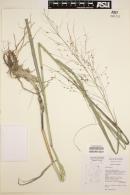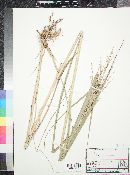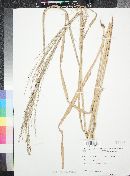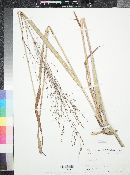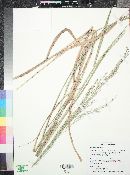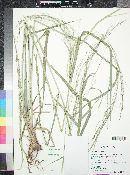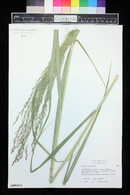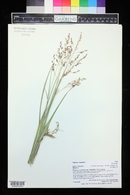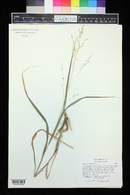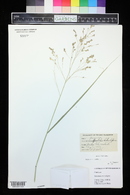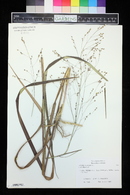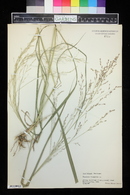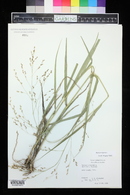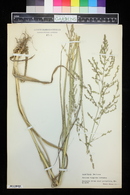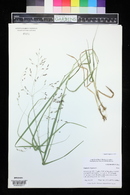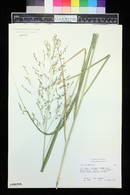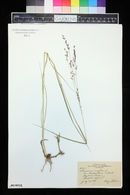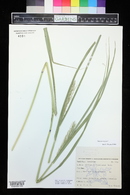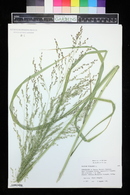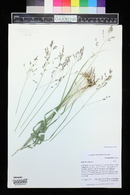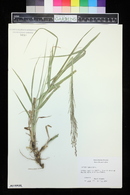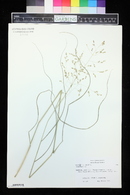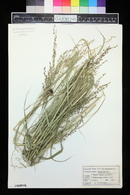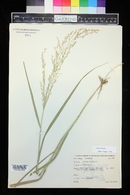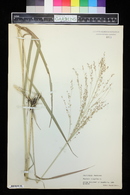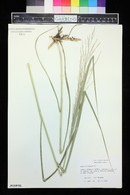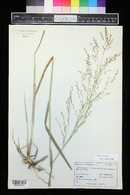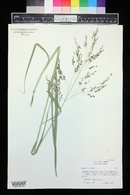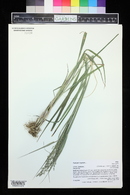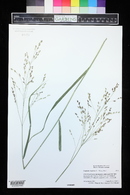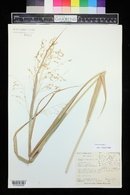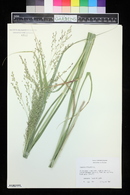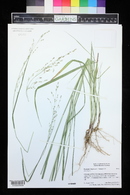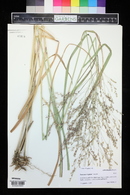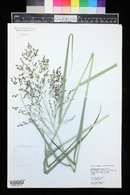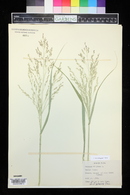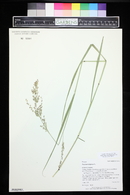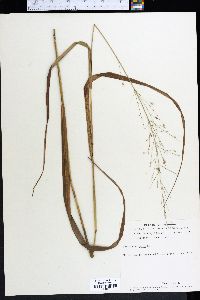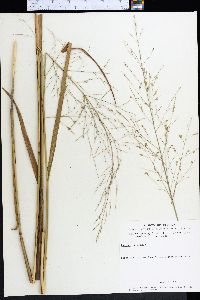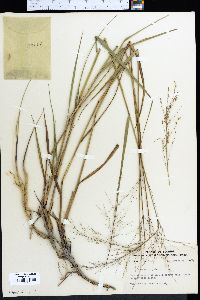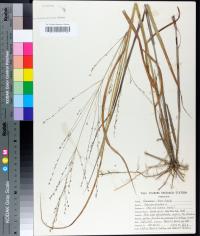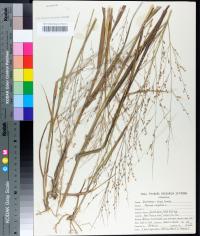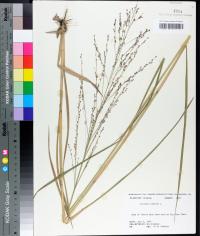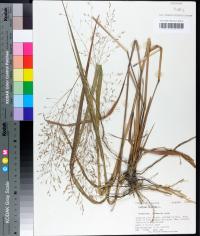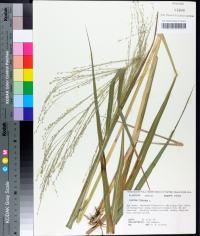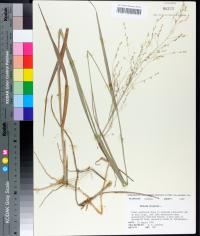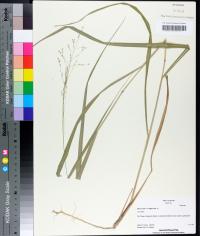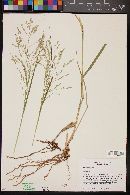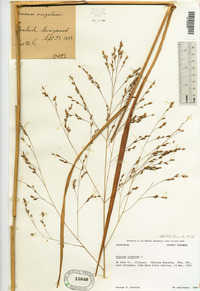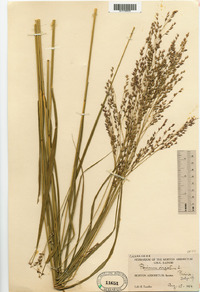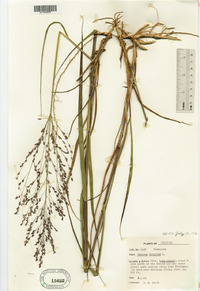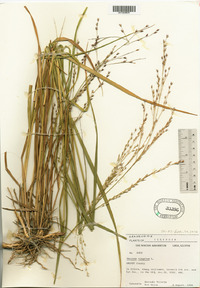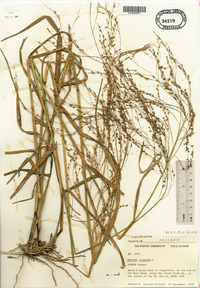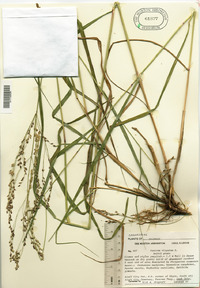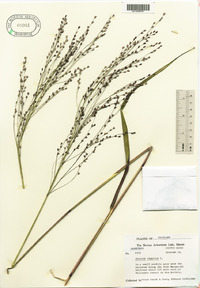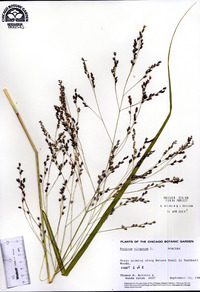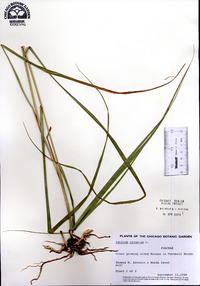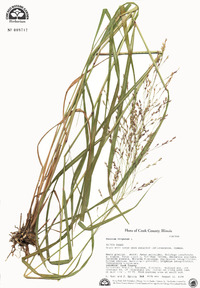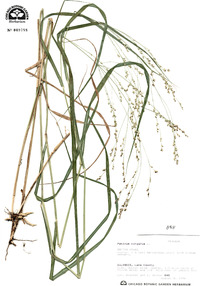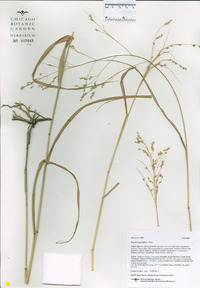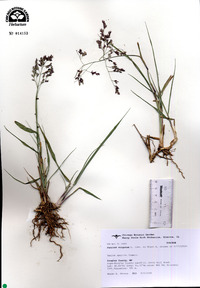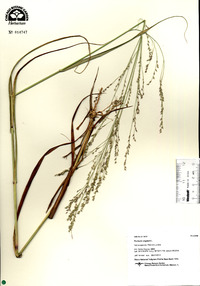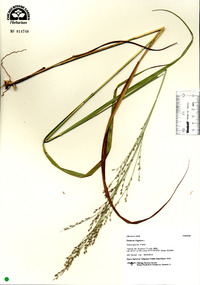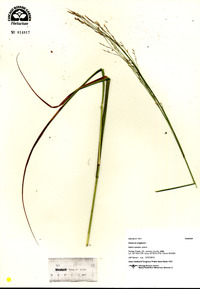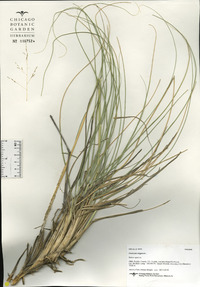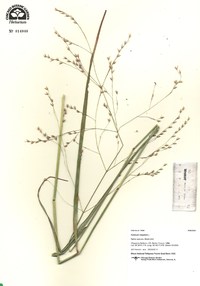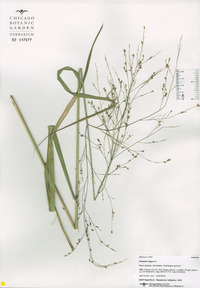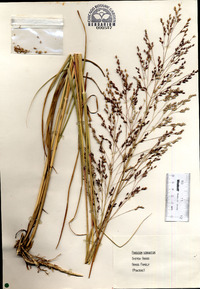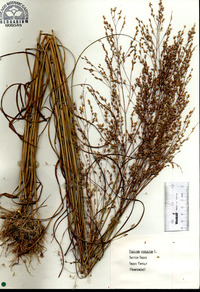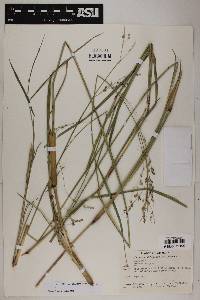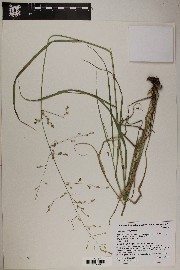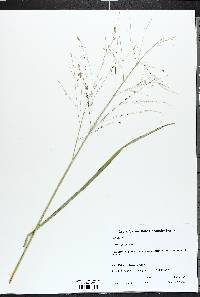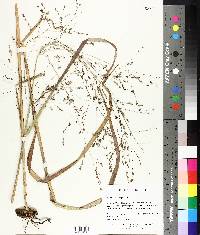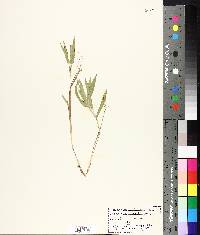Panicum virgatum
|
|
|
|
Family: Poaceae
Wand Panic Grass, more...switchgrass, Panic Raide
[Eatonia purpurascens Raf., moreMilium virgatum (L.) Lunell, Milium virgatum var. elongatum (Vasey) Lunell, Panicum buchingeri E. Fourn., Panicum ichnanthoides , Panicum kunthii E. Fourn., Panicum pruinosum , Panicum virgatum subsp. cubense (Griseb.) Borhidi, Panicum virgatum var. breviramosum , Panicum virgatum var. confertum Vasey, Panicum virgatum var. diffusum Vasey, Panicum virgatum var. elongatum Vasey, Panicum virgatum var. glaucephyllum Cassidy, Panicum virgatum var. scorteum Linder, Panicum virgatum var. thyrsiforme] |
Perennial herb with rhizomes 40 cm - 3 m tall Leaves: alternate, two-ranked. Sheaths longer than lower internodes, sometimes softly hairy, often bearing a marginal fringe of hairs. Ligules 2 - 6 mm long, membranous, fringed with hairs. Blades firm, upright, spreading or ascending, 10 cm - 0.6 m long, 2 - 15 mm wide, linear with a rounded to slightly tapering base, flat, parallel-veined, sometimes hairy, marginally rough. Inflorescence: a branched arrangement of spikelets (panicle), open, 10 cm - 0.5 m long, 4 - 20 cm wide, exserted. Primary branches thin, straight, spreading to ascending, rough, and often rebranching once. Fruit: a caryopsis, indehiscent, enclosed within the persistent lemma and palea. Culm: upright or decumbent, solitary or forming clumps, usually unbranched, sometimes purplish, 40 cm - 3 m long, 3 - 5 mm wide, round in cross-section, hard, sometimes with a waxy coating (glaucous). Spikelets: on 0.5 mm - 2 cm long stalks, 2.5 - 8 mm long, 1 - 2.5 mm wide, narrowly lance-shaped with a pointed apex. Glumes: unequal, herbaceous. Lower glumes 2 - 3 mm long, one-half to four-fifths as long as spikelets, pointed at the apex, five- to nine-veined. Upper glumes extending beyond the upper florets by up to 3 mm, seven- to eleven-veined. Lemmas:: Lower lemmas similar to upper glumes, extending beyond the upper florets by up to 3 mm, pointed at the apex, seven- to eleven-veined. Upper lemmas clasping at the base of the paleas, shiny, with rolled-up margins on the upper surface. Paleas:: Lower paleas 3 - 3.5 mm long, egg-shaped to arrowhead-shaped, transparent. Upper paleas longitudinally lined. Florets:: Lower florets male. Upper florets bisexual, 2 - 3 mm long, about 1 mm wide, narrowly egg-shaped with a pointed apex, shiny. Anthers three. Stigmas red. Similar species: No information at this time. Flowering: late June to early October Habitat and ecology: A common native grass in the Chicago Region. It is found in tall-grass prairies and Black Oak savannas. Occurence in the Chicago region: native Etymology: Panicum comes from the Latin word panis, meaning bread, or panus, meaning "ear of millet." Virgatum means wand-like. Author: The Morton Arboretum Common Name: switchgrass Duration: Perennial Nativity: Native Lifeform: Graminoid Synonyms: Many, see Tropicos Stout, erect, to 2 m, from hard, scaly rhizomes, often forming large tufts; ligule a dense zone of silky hairs; blades 2-5 dm, to 15 mm wide; glabrous or pilose near the base; infl open, freely branched, pyramidal, 2-4 dm; spikelets ovoid, soon widened distally by spreading of the glumes and sterile lemma, 2.2-5.6 mm; first glume half to nearly as long; second glume and sterile lemma subequal, conspicuously veined, acute to long-acuminate; 2n=18-108. Open woods, prairies, dunes, shores, and brackish marshes; N.S. and Que. to Man. and Mont., s. to Ariz., Mex Gleason, Henry A. & Cronquist, Arthur J. 1991. Manual of vascular plants of northeastern United States and adjacent Canada. lxxv + 910 pp. ©The New York Botanical Garden. All rights reserved. Used by permission. From Flora of Indiana (1940) by Charles C. Deam This species is found as a native in almost all the counties in the state and is now introduced in sand ballast along railroads in many counties. It is not a native of Wells County but I have found it along railroads in three widely separated places in the county. It prefers the open and a sandy soil. Where it is found, it is generally common over the extent of its habitat. It is found in sandy prairies, "oak openings," on gravelly banks of lakes and streams, and along the Ohio River it often grows among the cobblestones of boat landings and in the seams of outcrops of shale. …… Indiana Coefficient of Conservatism: C = 4 Wetland Indicator Status: FAC |
|
|
|

